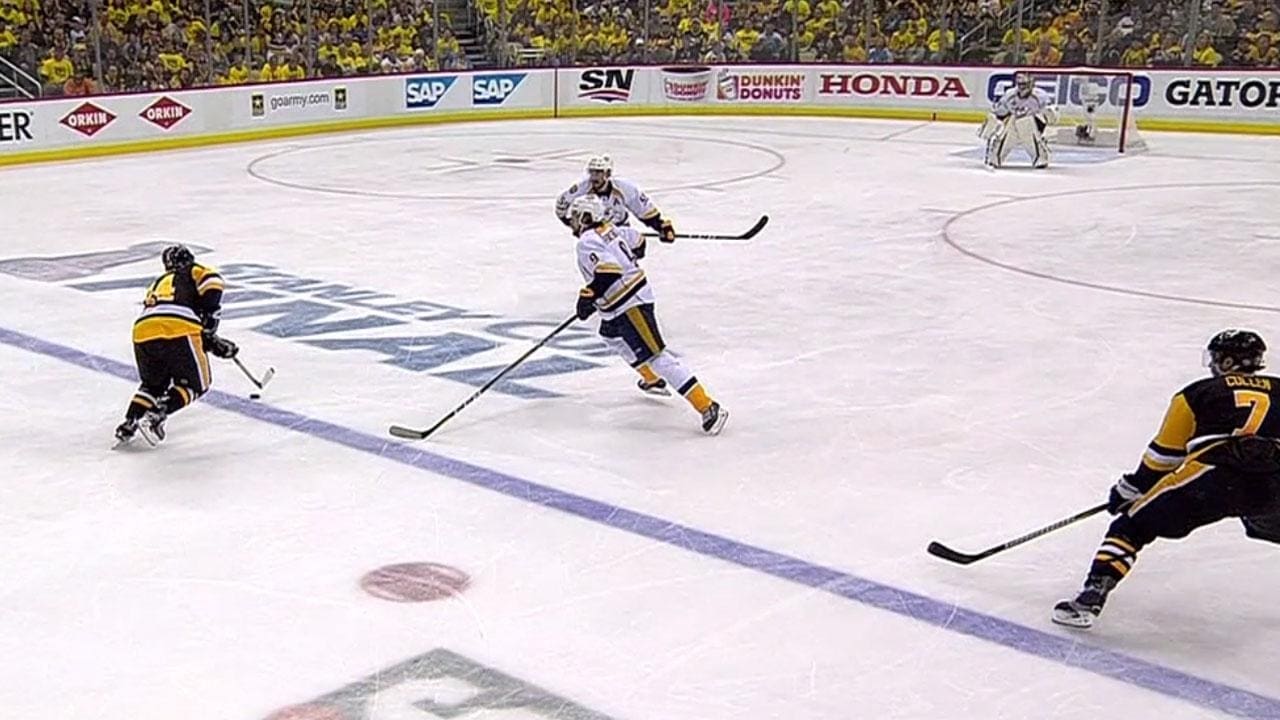Penguins
Molinari: Get On with the Game, NHL Needs Shorter Reviews

The Pittsburgh Penguins weren’t all that good at many things during the 2022-23 season.
Coach’s challenges to on-ice rulings made by the officials were one of the exceptions.
Mike Sullivan requested a video review of six judgment calls; five of those eventually were decided in favor of the Penguins.
Such challenges were introduced during the 2015-16 season, with the objective of making certain that erroneous calls (or non-calls) by referees and linesmen would be corrected and thus not have an impact on the outcome of a game.
There are three issues subject to video challenges: Missed offside calls, missed reasons for stopping play (puck hitting the protective netting, for example) and possible goaltender interference by the team scoring a goal.
Per stats compiled by ScoutingTheRefs.com, during the just-concluded regular season, a total of 208 calls were challenged, with 142 overturned.
The most frequent challenge, not surprisingly, focused on whether a play was offside before producing a goal. Such plays were reviewed 107 times, and overturned in 94 of them.
Goalie interference was checked 85 times, with a 43/42 split in favor of upholding the initial ruling. Stoppage-related calls were challenged 16 times, and overturned six.
But while even the most committed contrarian would find it difficult to argue against the merits of having missed and/or mistaken calls on the ice corrected, too many reviews are taking too much time to determine whether a rule was violated by a millimeter or a millisecond.
Replays of possible offside plays are subjected to scrutiny so intense that it makes it seem as if the Zapruder film gets little more than a cursory glance from people obsessed with the John F. Kennedy assassination.
The objective of video reviews is to avoid allowing an error in judgment to potentially alter the course of a game. Trouble is, a long, drawn-out breakdown of a possible offside play can have the same effect.
Momentum that scoring a goal could generate for a team might well dissipate if the players have to stand around for three or four minutes while it’s being ascertained whether the goal should stand, and a club that might be shaken by giving up the goal could have a chance to rest, regroup and regain its composure as the review drags on.
Sometimes — say, whether an attacking forward subtly kicked a goaltender’s skate, reducing his chances of stopping an incoming shot — a violation might only be evident from only one of the many angles available for review, so doing a thorough assessment would be appropriate.
However, that is not the case with a standard-issue offside challenge, and there’s an easy way to address that.
Limit reviews of such cases to, say, 30 or 45 seconds, or three run-throughs at full speed. There should be no time-consuming, frame-by-frame breakdowns to ascertain if there was some nominal infraction, particularly one that had no meaningful impact on the play.
If it’s not clear quickly that a call should be overturned, it should be allowed to stand.
Obviously, it would be ideal if every call an official made would be the correct one, and having a means to fix obvious errors in judgment is important, which is why coach’s challenges have a place in this game.
But hockey, like so many other sports, is largely a game of mistakes.
Players make them all the time, whether it’s an ill-considered pinch, a missed defensive assignment or a sloppy line change. So do coaches.
Many of those errors go largely undetected, and unless a referee or linesman is guilty of an egregious lapse in judgment, their split-second decisions should be accepted as an integral part of a wonderfully imperfect game.
One that can only suffer when parts of it are subjected to an interminable, frame-by-frame analysis.












